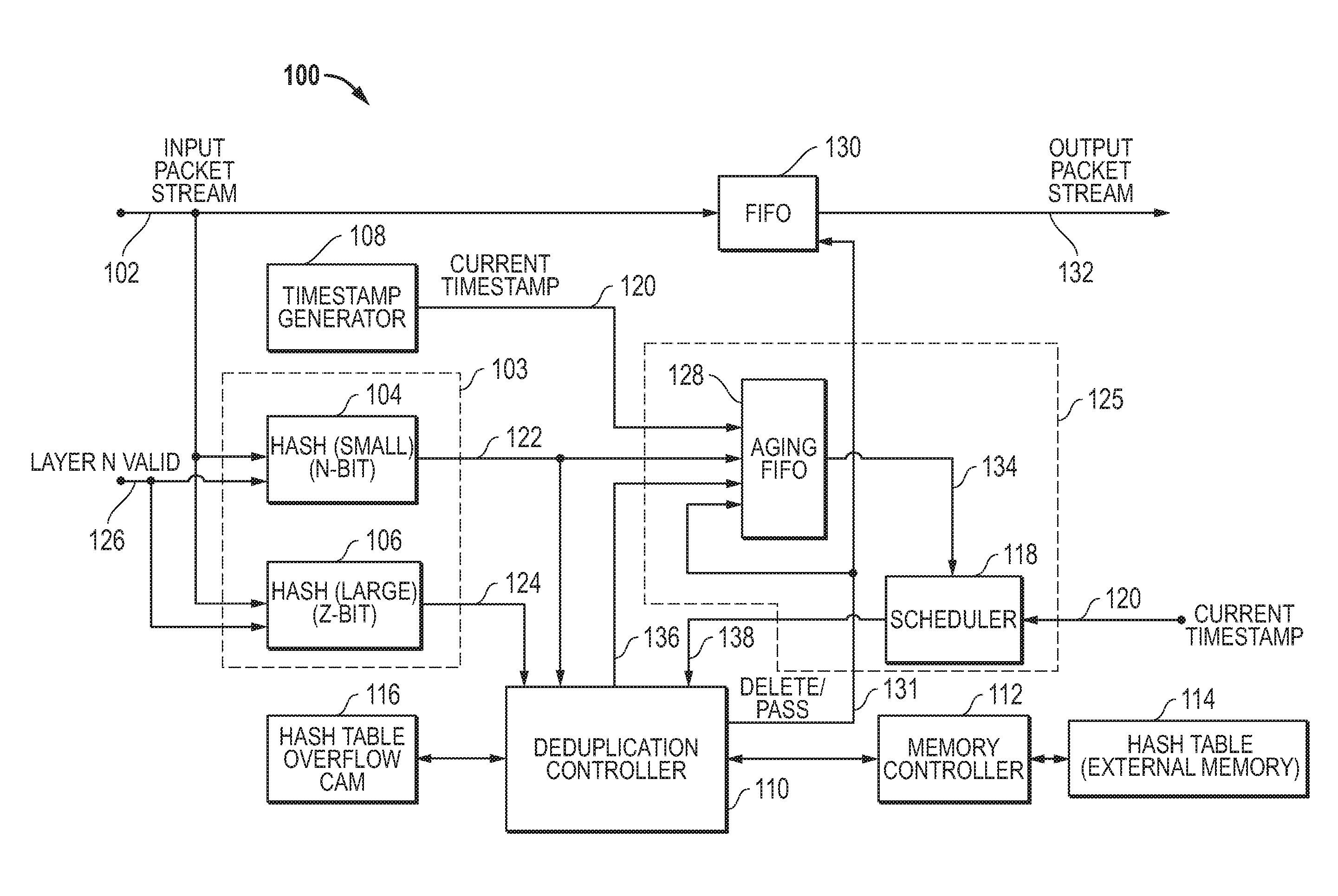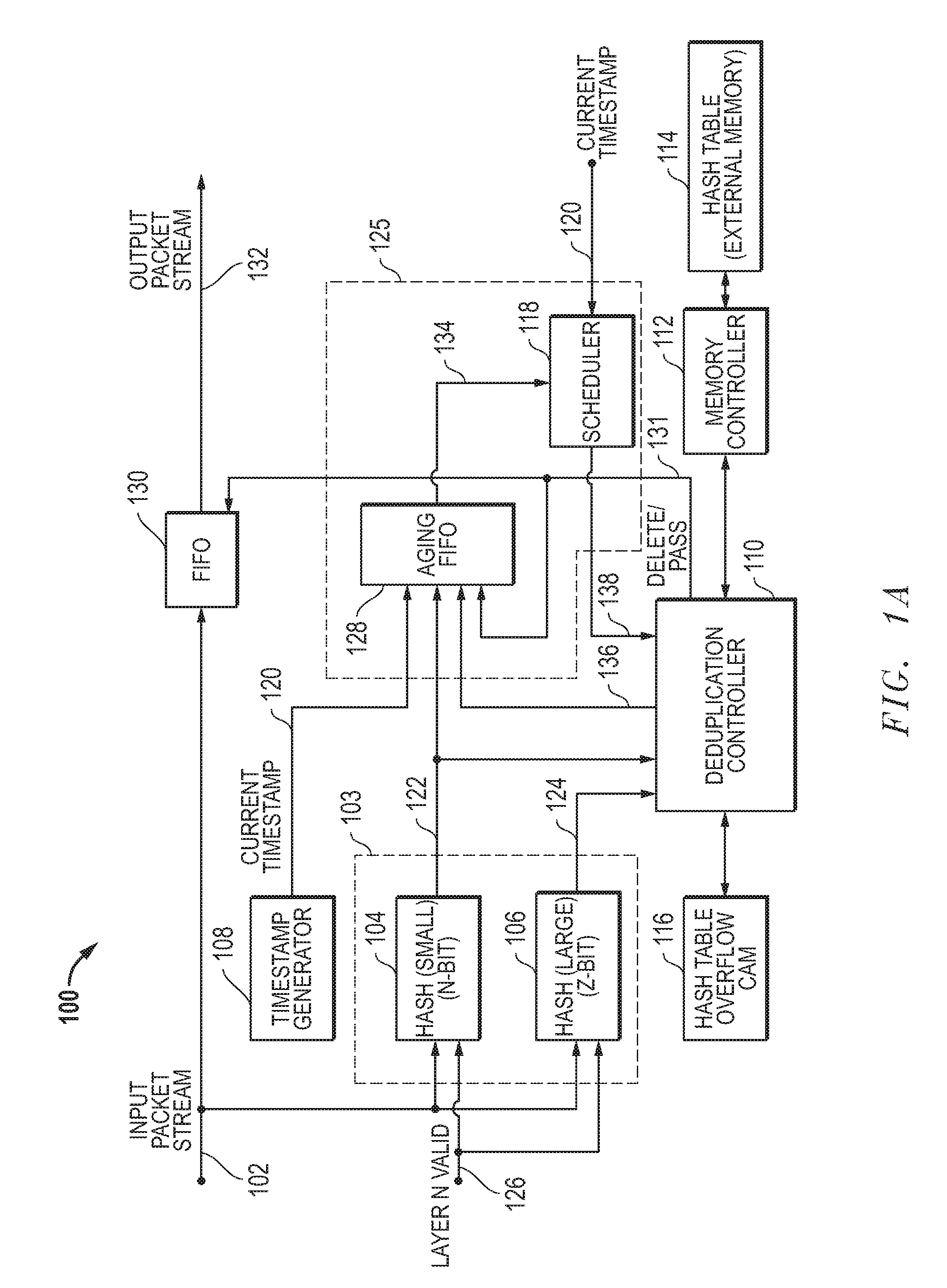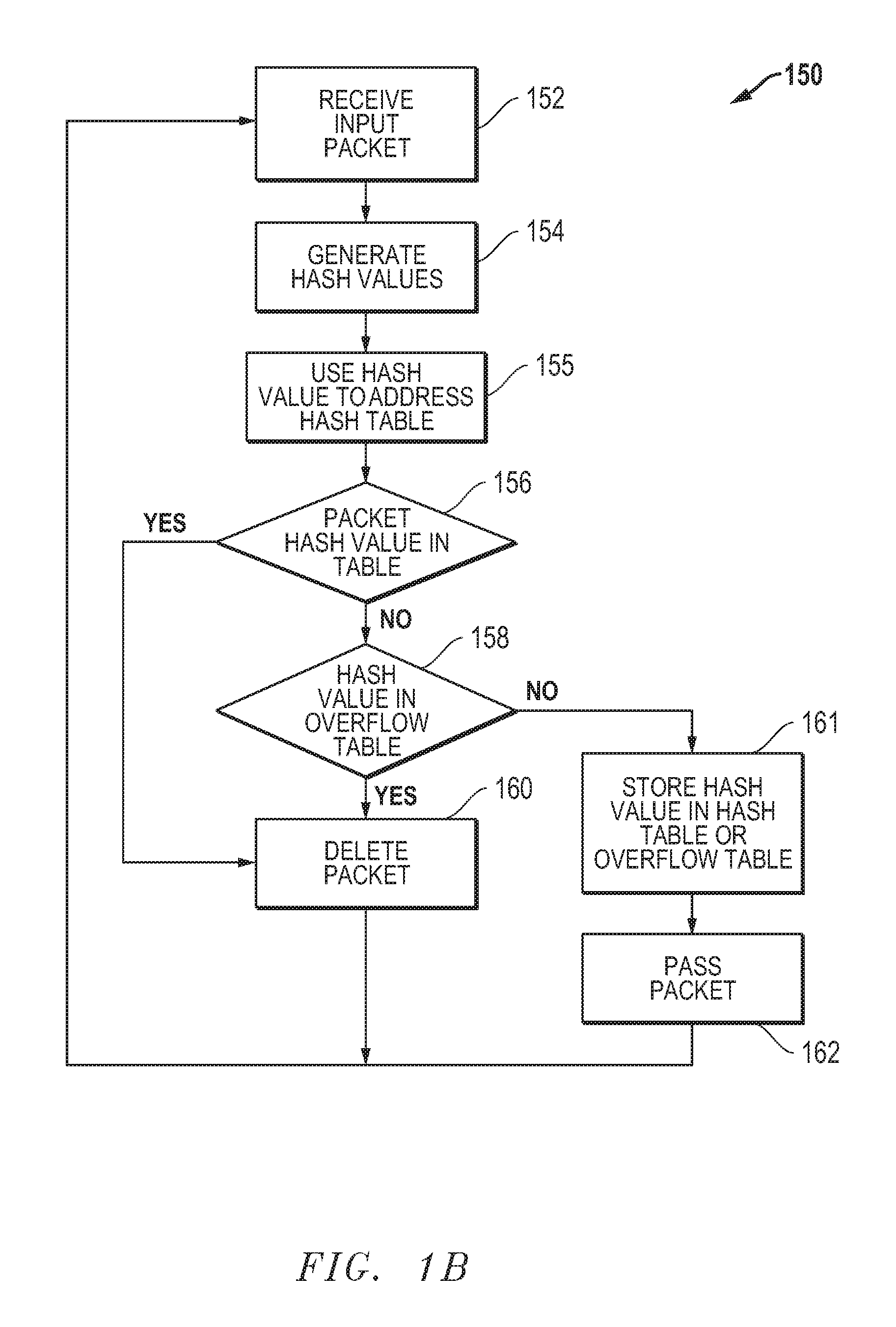Systems and methods for in-line removal of duplicate network packets
a network packet and in-line removal technology, applied in the field of network communications, can solve the problems of increasing the volume of network packet analysis, the difficulty of real-time analysis over off-line analysis of network data packets, and the worsening of the problem of high-speed network analysis. and network packets. the effect of duplicate packets
- Summary
- Abstract
- Description
- Claims
- Application Information
AI Technical Summary
Benefits of technology
Problems solved by technology
Method used
Image
Examples
embodiment 150
[0060]FIG. 1B is a flow diagram of an embodiment 150 for in-line removal of duplicate network packets using both a hash table and an overflow table. In block 152, an input packet within an input packet stream is received. In block 154, multiple hash values are generated for the input packet using one or more hash algorithms. In block 155, at least one hash value is used to address or access a table including stored hash values associated with previously received network packets. In decision block 156, a determination is made whether a hash value associated with the received packet matches a hash value previously stored in the hash table. If the answer is “YES,” then flow passes to block 160 where the received packet is deleted from the outgoing packet stream. If the answer is “NO,” then flow passes to decision block 158 where a determination is made whether or not a hash value associated with the received packet matches a hash value stored in an overflow table. If the answer in bloc...
embodiment 300
[0066]FIG. 3 is a block diagram for an embodiment 300 that includes the use of load balancing and multiple deduplication engines to process an input packet stream. For the embodiment depicted, the input packet stream 301 is received by load balancer 302. Load balancer 302 separates the input packet stream into multiple different packet streams 304A, 304B, 304C . . . and provides these different packet streams to multiple deduplication engines 100A, 100B, 100C . . . for removal of duplicate packets. The individual output packet streams 306A, 306B, 306C . . . from the multiple deduplication engines 100A, 100B, 100C . . . can then be sent to a combiner 304. Combiner 304 can be configured to combine the different packet outputs into a single output packet stream 310. It is also noted that one or more of the individual output packet streams 306A, 306B, 306C . . . could also be used for downstream processing, if desired.
[0067]In operation for this embodiment, therefore, multiple deduplica...
embodiment 500
[0082]FIG. 5A is a flow diagram of an embodiment 500 that utilizes one or more hash values to determine whether incoming packets match previously received packets in order to identify duplicate packets and remove them from an output packet stream. In block 502, one or more hash values are generated from an incoming packet. In block 504, one or more hash values are used to locate data for one or more previously received packets stored in a data storage system. A packet match determination is then performed in block 506. In decision block 508, a determination is made as to whether a match has been found. If “YES,” then flow passes along path 510 to block 512 where the packet is deleted so that it does not appear in the output packet stream. If “NO,” then flow passes along path 514 to block 516 where the packet is passed so that it is included in the output packet stream, and packet data associated with the passed packet is stored. The data stored for the passed packet thereby becomes ...
PUM
 Login to View More
Login to View More Abstract
Description
Claims
Application Information
 Login to View More
Login to View More - R&D
- Intellectual Property
- Life Sciences
- Materials
- Tech Scout
- Unparalleled Data Quality
- Higher Quality Content
- 60% Fewer Hallucinations
Browse by: Latest US Patents, China's latest patents, Technical Efficacy Thesaurus, Application Domain, Technology Topic, Popular Technical Reports.
© 2025 PatSnap. All rights reserved.Legal|Privacy policy|Modern Slavery Act Transparency Statement|Sitemap|About US| Contact US: help@patsnap.com



